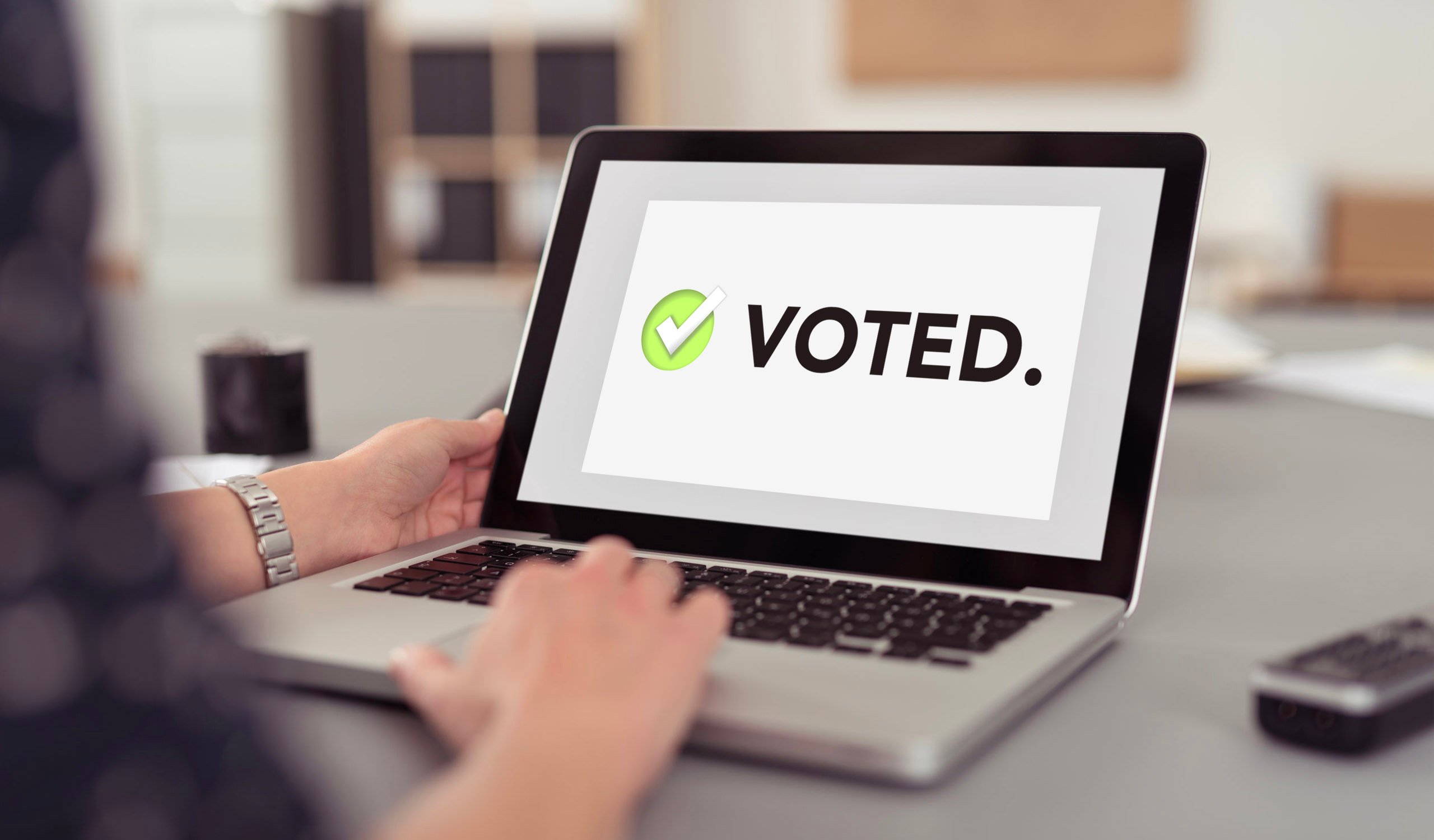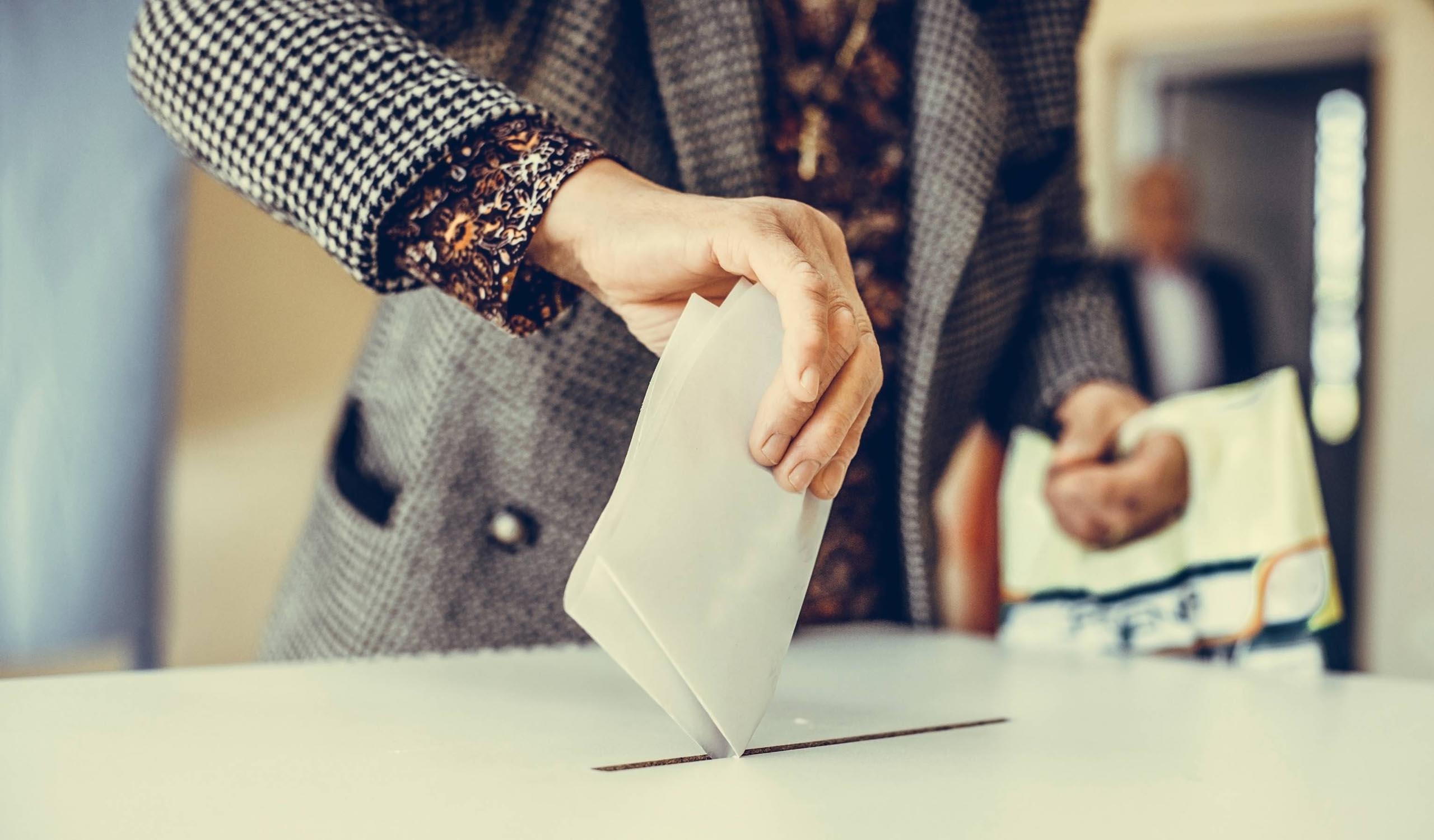Online elections are the most affordable method of voting, making it the most attractive option for unions across the United States. However, federal regulations remain vague on the matter, leaving open the question of whether or not online voting meets the correct legal standard.
The governing legislation, the Labor-Management Reporting and Disclosure Act (LMRDA) of 1959, compels unions to elect officers by secret ballot, establish safeguards for fair elections, and preserve ballots for up to a year. It doesn’t necessitate a particular method or system of voting, but all electronic voting systems must comply with the LMDRA’s requirements.
Enforced by the Department of Labor’s Office of Labor-Management Standards (OLMS), the law permits voting beyond paper ballots.
According to LMRDA Section 3(k), “‘Secret ballot’ means the expression by ballot, voting machine, or otherwise, but in no event by proxy, of a choice with respect to any election or vote taken upon any matter, which is cast in such a manner that the person expressing such choice cannot be identified with the choice expressed.”
It continues: “Adequate safeguards to [e]nsure a fair election shall be provided, including the right of any candidate to have an observer at the polls and at the counting of the ballots.” The reference to “polls” doesn’t consider remote voting, including both mail and electronic ballots.
Although mail ballots aren’t specifically addressed in the LMRDA, it nevertheless has become a common practice for union elections. In its guide to mail ballots, OLMS acknowledged, “Many unions conduct officer elections by mail because their members are dispersed over a wide geographic area making travel to polling sites difficult. In addition, some unions that conduct their elections at polling places also allow absentee voting by mail.”
While the OLMS accepts mailed ballots as a viable voting option, this conflicts with LMRDA’s reference to poll observers—which would be impossible to accommodate for members completing mail, absentee or electronic ballots. To accommodate this, the OLMS identified other requirements mail ballot voting can meet and are in line with LMRDA standards, such as allowing observers when the ballot envelopes are stuffed, labeled, and mailed and during any visits to the post office to pick up and remail ballot packages.
History of OLMS & Electronic Voting Regulation
Voting machines are included in the LMRDA and have been used for decades. In the 1990s, electronic voting became a regularly utilized method in LMRDA-regulated elections. For two decades, the OLMS remained largely silent on the topic, with only a few enforcement actions taken.
In 2011, the DOL issued a request for information from the public to assist in outlining guidelines concerning the use of electronic voting systems in union elections, which are defined as electronic voting machines used for casting votes at polling sites, remote electronic voting from personal computers via the internet, and from remote site telephones. The agency was seeking clarity on a range of issues, including:
- Should guidelines concerning the use of electronic voting systems be issued?
- What issues should be addressed?
- What standards should be included?
- If an electronic voting system has no voter-verified paper ballots, can an observable recount be conducted?
- How could a voter confirm that their vote was recorded and stored accurately?
The OLMS received an overwhelming response in favor of online voting from unions with a long history of operating elections over the internet. The AFSCME released a resolution to lobby for electronic voting, stating it “could lead to increased member participation” and “provide greater reliability, efficiency, accessibility and cost savings as compared to reliance only on paper balloting.”
To date, the agency has not issued guidelines for electronic voting as they have for mail ballot voting. In October 2016, OLMS released a “compliance tip” called “Electing Union Officers Using Remote Electronic Voting Systems,” which acknowledges online voting or remote electronic voting could be compliant with the LMRDA regulations.
At the same time, the OLMS brought a Civil Enforcement Action against the Association of Professional Flight Attendants for the group’s use of the BallotPoint online voting system. The Labor Department agency alleged the BallotPoint system both “permitted voters to be linked to their votes” and failed to provide “the right to have an observer at the polls and at the counting of the ballots.” As a result of the action, a federal court in Texas granted the DOL’s motion for summary judgment and nullified the union’s Jan. 9, 2016 election.
Although the process used by BallotPoint appeared to have a significant flaw allowing DOL investigators to link some voters with their ballots, it seems even if that were not the case, electronic voting will be treated with a level of scrutiny beyond what mail balloting is subject to. However, the case did reveal a few observable steps identified by OLMS that, while not taken by BallotPoint, could be implemented for electronic voting. The action read:
To protect the same interests that are safeguarded by having observers at the physical "polls" in an in-person election (e.g., to ensure that only eligible voters are voting), the observer requirement operates in a mail-ballot election by allowing observers to be present at specific stages of the election process, such as the preparation and mailing of the ballots, their receipt by the counting agency, and the opening and counting of the ballots. 29 C.F.R. § 452.107(c). Through these procedures, observers are able to ensure that the election is fair and that the ballots are not tampered with.
Similar solutions tailored to fit different voting methods have also routinely been instituted in political elections (which were Congress' model for union elections in the LMRDA) to vindicate the same goals behind the LMRDA's observer requirement. For example, in Texas, testing boards consisting of representatives from each political party are allowed to conduct logic and accuracy tests on voting machines, in a process that is also open to the press and the public. See Tex. Election Code§ 129.023. The testing board can also vote "test ballots" and verify that the results announced by the system match the predetermined results of the test ballots. Id. § 129.023(c). Finally, the software used in the election is copied and kept in a secure location outside the administrator's control. Id. § 129.023(f)(2).
The Future
It seems the use of online voting along with the interpretation of LMRDA requirements will continue to evolve as technologies do. But, the core tenet of a fair election through secret ballot and observable procedures will remain the same. When designing methods for ensuring a fair election it is important to keep in mind that secrecy and security are guaranteed by procedures.
The most basic paper ballot election relies as much on procedures as the most complex online voting election. For example:
- Physically restricting access to a polling place ballot box prevents voters from casting multiple ballots.
- Restricting identifiable marks on paper ballots prevents individuals from proving how they voted.
- A secure PO Box and secret envelope process allows for votes to be stored alongside voter’s identity before tabulation.
- The opportunity to view the list of members and challenge eligibility allows all participants the ability to verify only eligible voters are participating.
The history of LMRDA, enforcement actions by OLMS, and the “Compliance Tip” all provide insight into methods and procedures that ensure a fair election process. These methods and procedures can include:
- The opportunity to view the list of members and make eligibility challenges prior to the distribution of voter credentials.
- The ability to observe the preparation and distribution of voting credentials to be used by members (including any additional distribution or replacement).
- A technological process that maintains both the secrecy and security of the ballot in transit and in storage.
- The use of Logic & Accuracy testing allows for the voting system’s accuracy to be observably tested prior to the election.
- The use of source code escrow and other methods allowing for an independent verification of the software used in an election.
- The use of “zero reports” and allowing the observation of tabulation and results presentation.
Other Ways YesElections Can Run Your Union Election
YesElections has years of experience running online elections for unions of all sizes and is proficient in current regulations.
For elected union officers interested in other LMRDA-compliant voting methods, YesElections offers a variety of services:
- Paper Voting: This traditional method of voting is easy to use, customizable, protects against equipment failure, safeguards from duplicate votes, and provides a paper trail, which complies with LMRDA.
- Phone Voting: Members can take part in this convenient, easy to use, and secure method by using a touch-tone phone.
- Multiple Methods: To increase voter turnout, unions can combine multiple methods of voting including online, paper, and phone.
YesElections has facilitated and managed elections for more than a decade. Our experience and state-of-the-art security make us one of the most reliable election management agencies in the country. To learn more about how YesElections can help your organization, view our union election services, or request a free consultation, today.







